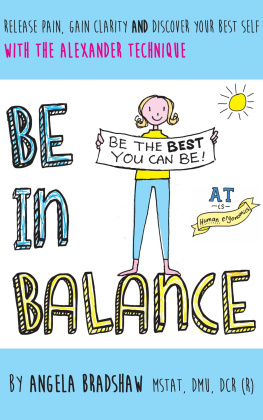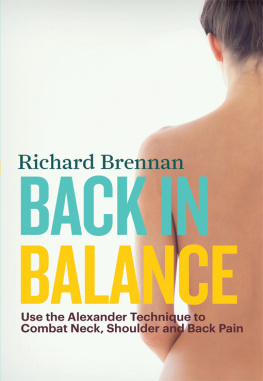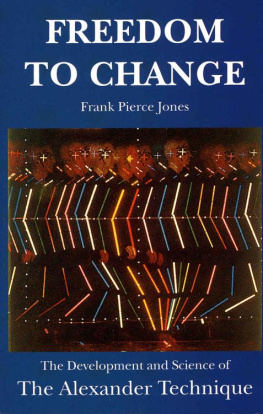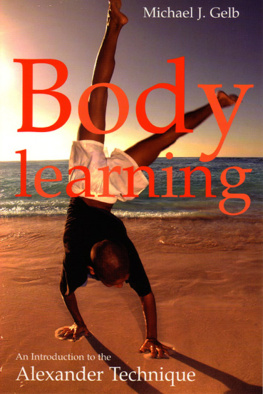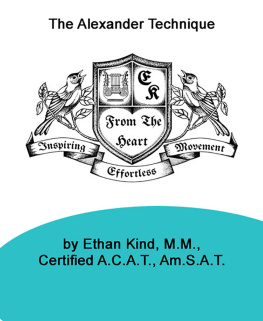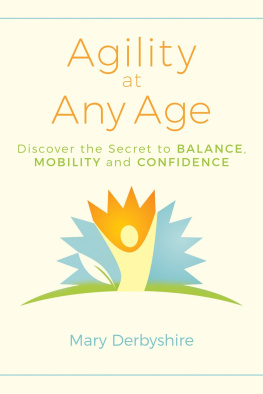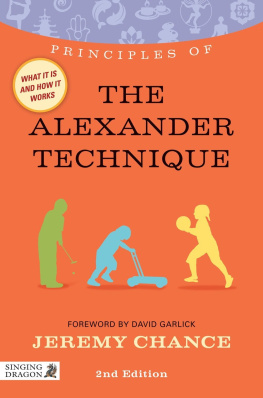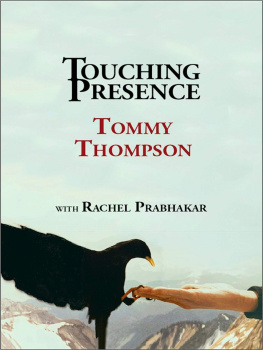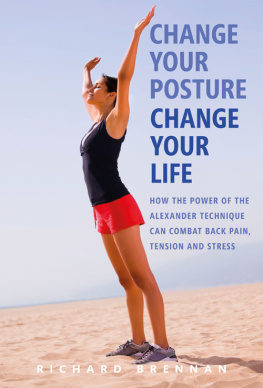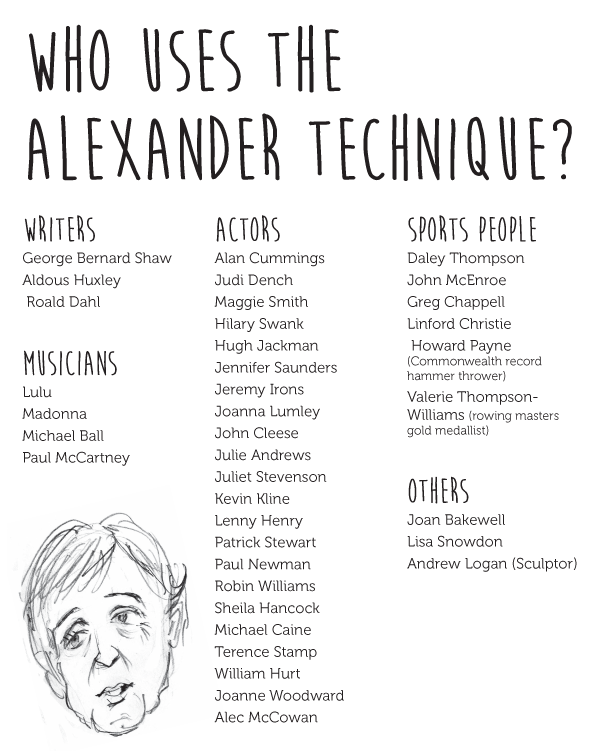Contents
First published in 2014 Balloon View Ltd, Kent, TN26 2DD
Copyright Angela Bradshaw 2014.
ISBN: 978-1-907798-34-4
Angela Bradshaw has asserted her right to be identified as the author of this Work in accordancewith the Copyright, Designs and Patents Act 1988.
All rights reserved. No part of this publication may be reproduced, stored, or transmitted in anyform, or by any means, electronic, mechanical or photocopying, recording or otherwise, withoutthe express written permission of the publisher.
Printed and bound in Great Britain by CPI Group (UK) Ltd, Croydon, CR0 4YY

Thank you for reading my book. Im delighted to share with you some of the principles of F.M. Alexanders work.

This is a simple introduction to the Alexander Technique (AT), and is NOT a substitute for a hands-on lesson with a qualified teacher. The real deal is a unique experience, which is difficult to articulate.
Aldous Huxley described his experience of lessons with F.M. Alexander as akin to describing the colour red to a blind person who had never had the gift of sight.

Everyones experience of AT is unique to the individual to whom it is tailored.
But we are all humans sharing this planet at the same time and we do have many common problems. This book was borne out of my personal wish to bring the work of F.M. Alexander into the mainstream in an accessible way.
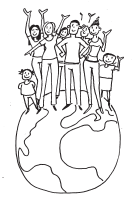
The work is simple, yet takes commitment to practise. After all, we are up against our personal habits!
AND simple does not always mean easy!
But if you have the will and the wish to learn, it pays HUGE dividends to your health, wellbeing, sensory awareness, balance, co-ordination, posture, energy levels, thinking skills, mindfulness, spatial awareness, performance, breathing, handling anxiety, handling stress the list goes on.
Who is this book for?
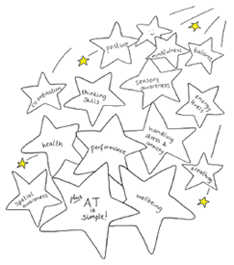
Do you
- have back/shoulder/neck pain?
- have RSI issues?
- have posture concerns?
- suffer from anxiety?
- suffer from stress?
- struggle with confidence?
Are you
- a professional person?
- a runner?
- a musician?
- an athlete?
- pregnant?
- wanting to improve yourself?
- a cyclist?
- an actor?
Then read on the Alexander Technique can help YOU to BE IN BALANCEits the BEST that you can be!
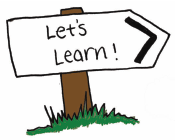

Angela Bradshaw originally trained as a sonographer and radiographer, and enjoyed some years in this profession.

However, a repetitive strain injury curtailed this career, and in seeking help for this she discovered the Alexander Technique.
When she realised what a profound effect the technique could have on this type of injury, and also the broad scope of its applications, she decided to become a teacher herself. She now works with individuals and groups, using the Alexander Technique to help them learn how to use their bodies well.
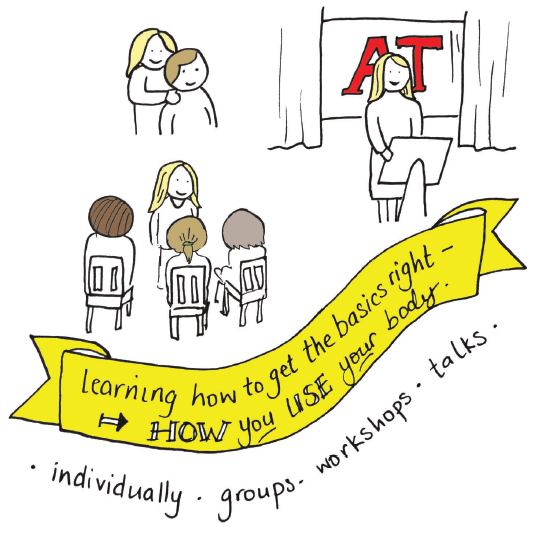
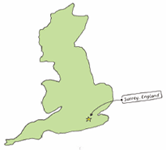
Angela lives with her husband, Keith, and their two daughters, Heather and Grace, in Woking, Surrey.
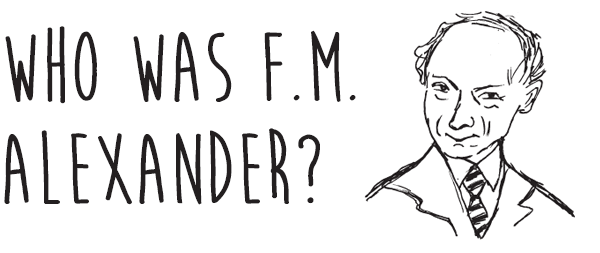
Frederick Matthias Alexander was a man ahead of his time. As a young Shakespearean actor in the 1890s, he had a problem that threatened to end his promising career. His voice would become increasingly hoarse during performances until he was barely audible. He consulted doctors about it, but no underlying medical cause or disease could be found. Rest would restore his voice, but another performance would soon render it gone again!
He reasoned that it was something he was doing himself to cause this strain on his vocal organs. His only option was self-help. Using mirrors, he observed his way of speaking and thus the work was begun.

Over a period of several years he realised that the poor coordination of his whole being had led to this original problem. Conscious control of his actions led to a more coordinated use of himself, and he recovered his voice and improved his own health. The development of his Technique began when other people came to him for help with issues of their own.
The medical profession referred patients to him, actors flocked to him and the Technique became his main occupation. He subsequently came to London where he taught the Technique until his death in 1955.
There are 2,500 Alexander Technique teachers worldwide as I write in 2013.

While relaxing on the south coast, a few days before reading the draft of Angela Bradshaws Be In Balance, I received an urgent message, which necessitated my making an international call on my mobile phone. A virtually non-existent signal, a boisterous wind, the need to conduct a critical negotiation with an excited respondent whose broken English was delivered with machine-gun rapidityWhat could possibly go wrong?
If only Id already had the benefit of reading Angelas book, which introduces the Alexander Technique to the uninitiated, I would have handled the situation better. I could have approached the call the Alexander way (yes, as Angela points out, the Technique can be applied to every aspect of everyday life, even telephone behaviour). As it was, in the heat of the moment I forgot what very little I already knew of the Alexander Technique. Shouting into that mobile phone, worrying about the content of the conversation, not hearing and not being heard, I tensed up: shoulders high, breathing shallow, knees locked rather than (as Angela puts it) on the latch it was a classic recipe for postural disaster. My distressed right-side gluteus minimus muscle, which had given me long-term problems but was on the mend, relapsed into painful spasm.

